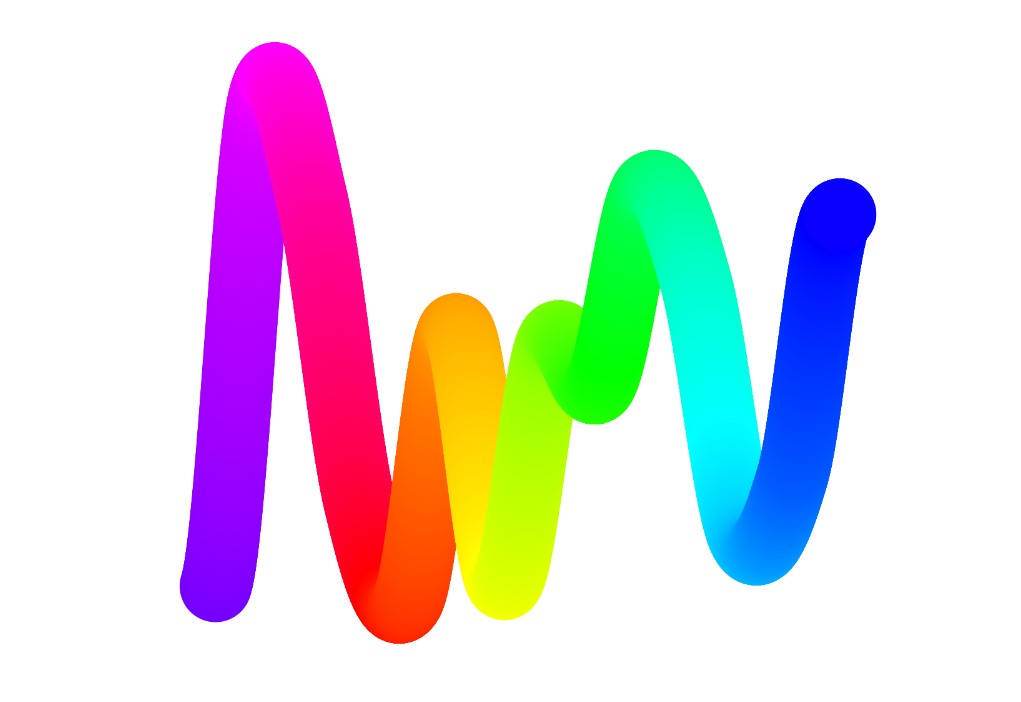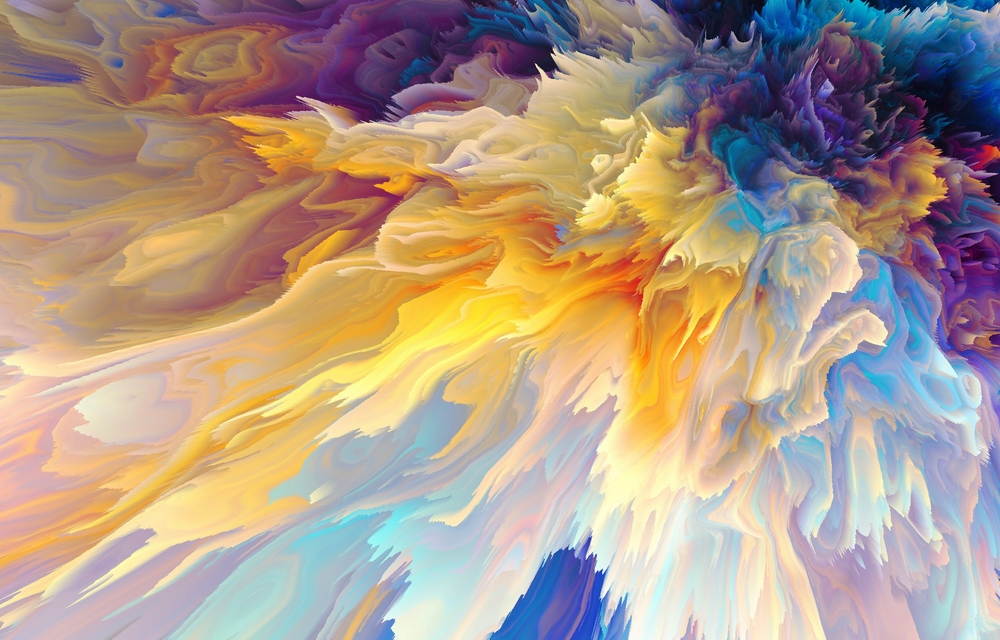Learn about the most common types of generative art NFTs and get examples of corresponding popular NFTs in our guide.
Generative art NFTs don’t need a use case, roadmap, airdrops, or even a community. They’re fun to collect and are an increasingly popular subset of NFTs.
Instead, a buyer or collector can pick one up because they admire the artwork, like how it’s created or what it represents. Notable platforms for acquiring generative art include Art Blocks, Gen.art, and Async. But the concept of generative art has been around for decades.
So, what types of generative art should you look out for when navigating these platforms? Suffice it to say you can find commonalities between the different types of generative art NFT examples listed below.
Table of Contents
Here Are The Top 8 Types of Generative Art NFTs
1. Interactive Generative Art

Interactive generative art describes artworks viewers can manipulate or engage with directly, changing the color, size, shape, or the final output. Examples include physical installations and computer-generated outputs.
Yuri Vishnevsky created Silk, a website where visitors can create generative artworks that play with light, color spectrum, and sound. It’s usable via a website and app.
Erik Calderon’s Chromie Squiggle is a fun blue-chip interactive generative art NFT. On the Art Blocks generator, viewers can manipulate a Chromie Squiggle. Using keyboard commands, they can change the color of a Chromie Squiggle. American Joshua Davis is a modern generative artist who creates interactive installations, exhibitions, and NFTs.
2. Interactive Generative Art
Text-based generative art uses computational processes to create random text-based outputs and sometimes combines the results with imagery.
Maya Man’s Fake It Till You Make It NFT comments on social media’s hustle and grind culture. This 700-piece collection text-based generative art project plays on the overly cheerful buzzwords, clichés, and motivational imagery ripe on social media platforms. The project has more than quadrupled in floor price since mint in the late Autumn of 2022. She said:
“I started this project feeling kind of cynical about these types of Instagram posts, but after seeing thousands of phrases generated, I’ve started to unexpectedly find real meaning in the output sometimes. They’re like little prayers and if the real ones help someone get through their life when they see them on their Instagram feed that’s beautiful.”
Matty Mariansky’s Para Vellum is another example from Art Blocks. His 1,000-piece NFT collection, which randomly overlays words and color fields onto a poster-style digital canvas. Both projects are also examples of static generative art in that they don’t move or change once minted.
3. Fractal Art

A fractal is a mathematical object with complex and detailed structures. Rich in seemingly endless patterns, you can zoom in and out of, almost like a planet or an entire world. They’re often found in nature, for example, think of those rich patterns found in National Geographic images of forests, rivers or the Arctic. Islamic geometry patterns found in religious buildings are an early example of fractal art, whereby a pattern is repeated seemingly endlessly.
An example of a mathemetician working in this space is American computer graphics researcher Karl Sims. He’s created fractals based on the work of the mathematician Benoit Mandelbrot.
Vortex by American artist Jen Stark is an example of a fractal generative art NFT. Released on Art Blocks in 2021, 1,000 pieces exist in the collection. Users can click and drag to interact with these fractal NFTs. She said about her inspiration for the project:
“This series is inspired by elements in the natural world: geodes, evolution, color theory, topography and sacred geometries. I wanted to translate my earlier signature, hand-cut vortex paper sculptures, into works of art through code …. I’m also fascinated by color theory and the juxtaposition of different colors that create surprising visual effects.”
4. Data Visualization
This type of generative art uses data to create creative visual representations of normally dry and bland information. Giorgia Lupi is an example of a noted data visualization artist. In 2020, she documented changes in her life due to the COVID-19 pandemic based on data and the impact of the virus. Her works have been exhibited at museums worldwide, including the Museum of Modern Art in New York.
Love is a collaboration between the Associations of Tennis Professionals Tour (ATP Tour), Art Blocks Engine, and artist Martin Grasser. Grasser created NFTs in this 300-piece collection using in-match sports data from the 2022 Nitto ATP Finals in Turin, Italy.
Another example is An Important Memory for Humanity by Reifik Andol. This NFT collection uses data from NASA and SpaceX’s archives about the world’s first all-civilian space flight in 1999: Inspiration4. The output is a series of data sculptures and paintings of the Inspiration4 mission.
5. Generative Music
The 1969 piece I Am Sitting in a Room” is a traditional example of generative music. American composer Alvin Lucier recorded text in a microphone and played this back into the room, and recorded the results in an infinite or distorted loop.
Polychrome Music by Dutch musicians Rafaël Rozendaal & Danny Wolfers (Legowelt) is another example of a generative musical art NFT project. This 400-piece collection was released on Art Blocks in 2022. The NFTs plays an infinite composition on three audio channels. Wolfers said about the project:
“The main inspiration…are demos and game soundtracks on the Commodore 64 computer…I think it was also important for the project to have ‘intense’ melodic composition in contrast to all the meandering drone or ambient soundtracks you often hear in art projects these days.”
AlgoRhythms by Han x Nicolas Daniel is another example. The artists describe their NFTS as “generative audiovisual sculptures”. When a viewer clicks on one, it plays musical scales, and the image moves in tandem and changes color.
6. Generative Video
Generative artists sometimes combine multiple media types, including graphical effects, text, and music, to create generative videos.
0xDEAFBEEF is a notable blue-chip generative music video NFT. During the 2020 pandemic, he used a c compiler and other coding tools to create on-chain generative art music, sound, and images. DEAFBEEF applied to Art Blocks, but the waiting list was too long. Then, he developed a unique system for his generative music and video art. The result is a claustrophobic animated video-loop sequence. He said about his creative process,
“That being said, I don’t think generative art is so radically different from some traditional art processes. Artists do not always begin their process with a finished goal in their mind. The artwork is “grown” through an iterative process of observing and deciding what action to take next.”
7. Glitch Art
Glitch art describes using digital or analog errors to create a distinct visual aesthetic. Think dystopian or cyberpunk imagery.
XCOPY is the NFT’s space’s most prominent fractal artist. Some of his collections are one-of-one pieces. However, XCOPY also creates one-of-many fractal art collections. Grifters is a notable example. It’s a 666 picture-for-profile collection featuring creepy blue, yellow, and green faces set against a black background. Xcopy also sold All Time High in the City for an astonsing $6.1 million in January 2022.
8. Dynamic Generative Art
Dynamic generative art changes by itself based on time or algorithms. Viewers don’t need to interact with it in any way. The best-known blue chip example is Dimitri Cherniak’s The Eternal Pump. Cherniak created the 50-piece collection with Javascript and CSL, and it was minted in 2021. The generative images in this 50-piece collection pulsate and pump in an endless loop.
Matt Kane’s Gazers is another notable example. This 1,000-piece collection minted in 2021. It plays on the concept of gazing at the moon versus crypto mooning and reaching an all-time high. At first glance, the NFTS appear static, but they subtly shift and change gradually. Kane said, “Collectors might spend a moment admiring their work, walk away for a couple hours, and then come back to be delighted, noticing the most subtle of shifts.”

